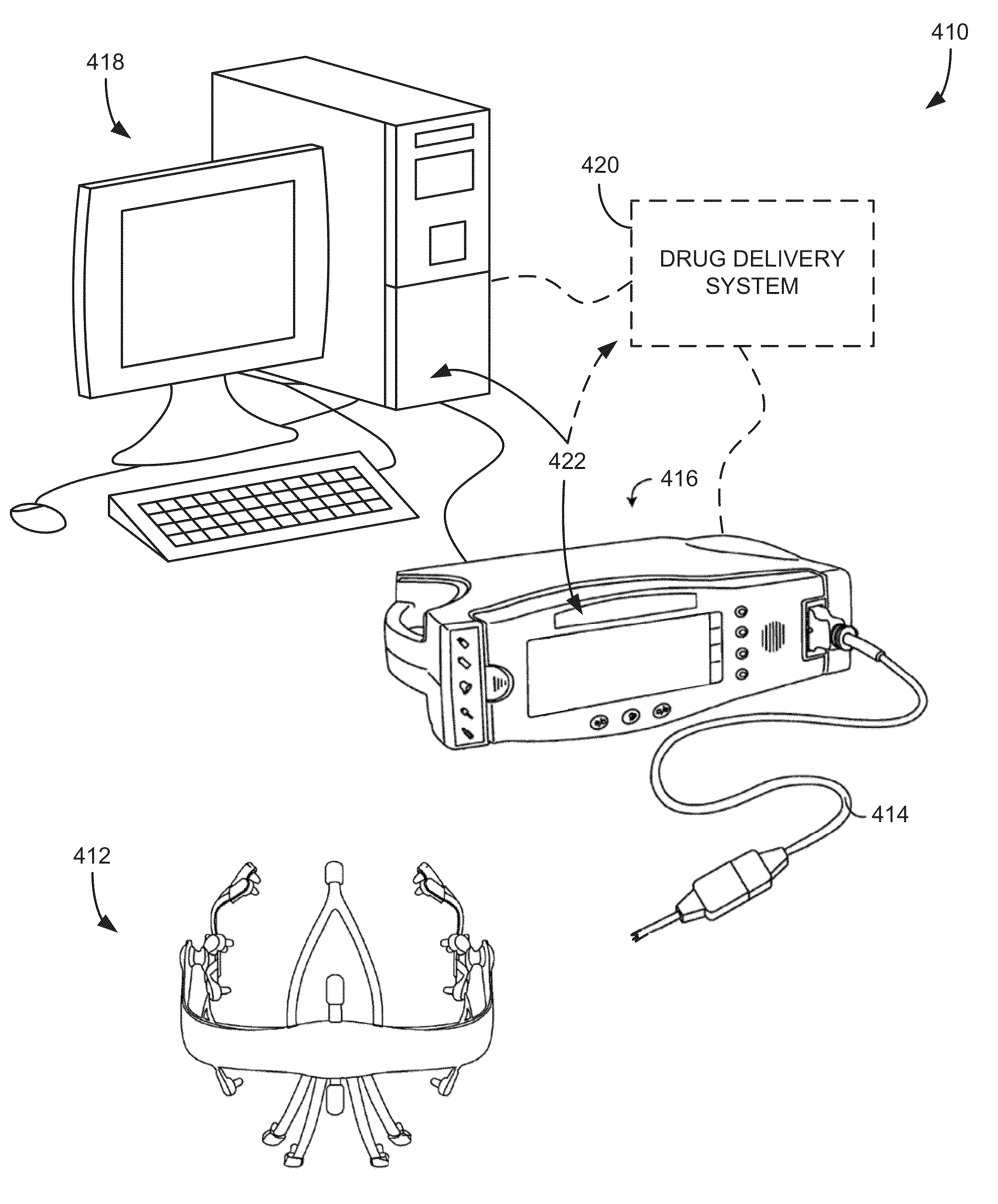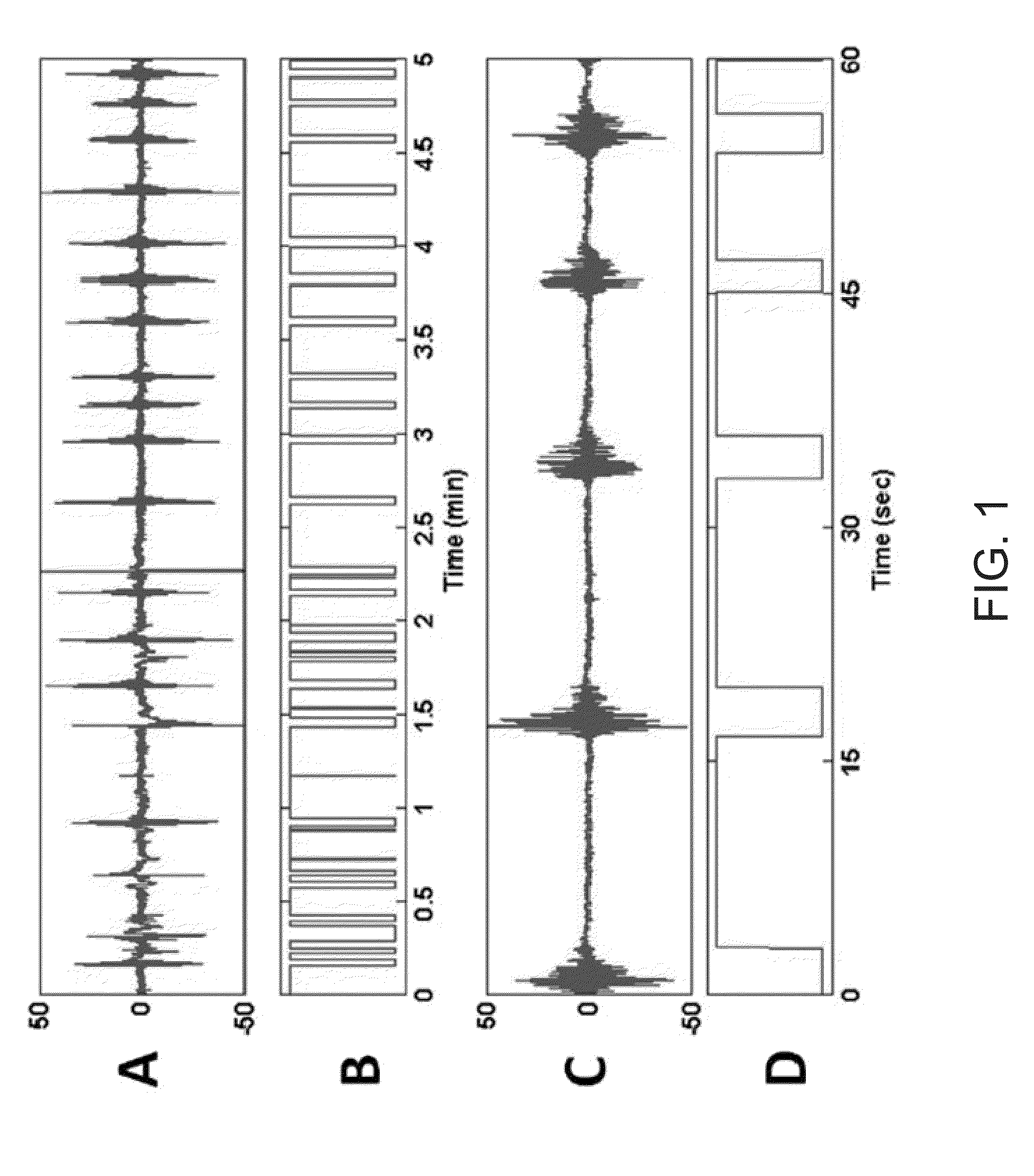System and method for monitoring and controlling a state of a patient during and after administration of anesthetic compound
a technology of applied in the field of systems and methods for monitoring and controlling a state of a patient, can solve the problems of poor representation of a patient's brain state, substantial variability, and incomplete understanding of the effects of anesthesia on patients
- Summary
- Abstract
- Description
- Claims
- Application Information
AI Technical Summary
Benefits of technology
Problems solved by technology
Method used
Image
Examples
example i
Physostigmine Effect on Stable Burst Suppression
[0177]The following description is with respect to an analysis of a rat under general anesthesia-induced burst suppression The BSP is compared to the BSR in order to illustrate its benefits. For the experiments described herein, signals were first band pass filtered between 5 and 30 Hz. The filtered signals were thresholded and suppression segments less than 500 milliseconds in duration were switched to 1. The binary series was then provided as an input to the BSP algorithm.
[0178]The BSP algorithm was evaluated on a rat EEG signal recorded to test whether physostigmine, a cholinergic agonist hypothesized to increase arousal, causes the burst suppression pattern observed during deep anesthesia to switch into continuous activity (associated with increased arousal). In this experiment, it is advantageous to know whether physostigmine, and not saline (control), induces a shift from burst suppression (deep anesthesia) to a delta wave patter...
example ii
Burst Suppression During Hypothermia
[0188]The above-described systems and methods have broad clinical applicability. One exemplary clinical application includes the ability to track of burst suppression during hypothermia. For example, consider the binary filter when used to assess the evolution of the hypothermia induced burst suppression level during a cardiac surgery of around three and a half hours.
[0189]The following description is with respect to an analysis of a patient under hypothermia-induced burst suppression. The BSP is compared to the BSR in order to illustrate its benefits. Signals were first band pass filtered between 5 and 30 Hz. The filtered signals were then thresholded and suppression segments less than 500 milliseconds in duration were switched to 1. The binary series was then provided as an input to the BSP algorithm.
[0190]In this example, the EEG signal was recorded from a scalp electrode at the FP1 site referenced to the FZ electrode. The total observation int...
example iii
Burst Suppression During Propofol Induction
[0195]Another exemplary clinical application is the tracking of burst suppression during propofol bolus induction. Typically, in the operating room, a bolus dose of an anesthetic is rapidly administered to induce general anesthesia. It is often the case that the patient enters burst suppression within seconds and might remain in that state for several minutes. Since the efficiency of the drug depends on several empirical factors, it is relevant to monitor the level of suppression that is reached and its trajectory, which may help detect any anomaly, or tune the subsequent doses or levels of anesthesia.
[0196]The approach of the present invention was evaluated on a burst suppression pattern and its progression induced by a propofol bolus. The EEG was recorded from a scalp electrode at the FP1 site referenced to the FZ electrode of the standard electrode configuration. The total observation interval is of 17 minutes, where the EEG signal was s...
PUM
 Login to View More
Login to View More Abstract
Description
Claims
Application Information
 Login to View More
Login to View More - R&D
- Intellectual Property
- Life Sciences
- Materials
- Tech Scout
- Unparalleled Data Quality
- Higher Quality Content
- 60% Fewer Hallucinations
Browse by: Latest US Patents, China's latest patents, Technical Efficacy Thesaurus, Application Domain, Technology Topic, Popular Technical Reports.
© 2025 PatSnap. All rights reserved.Legal|Privacy policy|Modern Slavery Act Transparency Statement|Sitemap|About US| Contact US: help@patsnap.com



